The co-pilot turned the aircraft and started a climb in preparation for an emergency GPS recovery. An avenue of approach is an air or ground route of an attacking force leading to an objective or key terrain. factors of the overall operations. A-50. A-40. It enables him, A-123. Essential Task. For sustaining operations, it accomplishes the assigned purpose, which enables both the shaping and decisive operation (again, nested concept). Template events and analyze them for their political, economic, psychological, environmental, and legal implications. Where (the objective or location stated in company OPORD), and. Projected sustainment expenditures, friendly casualties, and resulting medical requirements. The area of interest includes threat forces or other elements characterizing the operational environment and greatly influencing the accomplishment of the mission. A-121. A-114. Every culture, every group of people, has patterns of behavior. To determine how to maximize the effects of combat power while protecting friendly forces and minimizing collateral damage. The mission brief went as usual. The leader goes past observing to application. Leaders must understand how their units' purposes relate to higher. Doctrinal Analysis (How Enemy Will Fight) He includes in this situation template the likely sectors of fire of the enemy weapons and tactical and protective obstacles, either identified or merely templated, which support defensive tasks. b. Leaders constantly receive information, from the time they begin planning through execution. The leader identifies locations along each avenue of approach providing clear observation and fields of fire for both the attacker and defender. The leader determines the effects of each aspect of terrain on both friendly and enemy forces. ;" "Reconnoiter route BLUE;" "Assist the forward passage of 1st platoon, B Company." We had passengers, field Soldiers, aircrew and our aircraft to consider. Determine where events will occur that differentiate between EN COAs (these become NAIs) 4. He uses these factors, gained from his relational combat power analysis matrix, as his frame of reference in tentatively selecting the best COA. The leader looks at specific enemy actions during a given operation and uses the appropriate situation template to gain insights into how the enemy may fight. Starting with a baseline pattern and keeping a mission analysis on how the population is responding or have responded in the past under similar circumstances will assist leaders in using patterns to the unit's advantage. Leaders use tactical mission task graphics and control measures (Refer to ADRP 1-02 for more information.) They could have a hard time maintaining optimum speed, moving in some types of combat formations, or transitioning from one formation to another. Civil considerations include the influences of manmade infrastructure, civilian institutions, and attitudes, activities of civilian leaders, populations, and organizations within an area of operation, with regard to the conduct of military operations. How do I detect and, if desired, bypass the obstacles? Identifies the enemy's strength by unit. How do civilian considerations affect the operation? Next, the leader analyzes relative combat power, generates options, arrays his forces, develops a CONOP, assigns responsibility, and prepares a COA statement and sketch. Other critical conditions to consider include visibility and weather data, and events such as higher headquarters tasks and required rehearsals. Our visibility was rapidly deteriorating and, to make matters worse, we had only a single light source in the distance to determine our visibility. He also may make sound assumptions about the enemy, human nature, and local culture. Yet, when we actually made it to our destination, we could not see the other end of the airfield. Leaders understand their second higher up concepts of the operation. By defining organizations within the community, leaders can understand what groups have power and influence over their own smaller communities and what groups can assist our forces. Seize, destroy, and neutralize are examples of tasks associated with an offensive operation. In a time-constrained environment, a platoon leader typically develops only one COA. Analysis of troops and support answers the question: What assets are available to accomplish the mission? They take five steps to fully analyze their assigned mission as directed from higher . An appreciation for time, space, and triggers needed to integrate direct and indirect fire support, obscurants, engineers, air defense artillery, and chemical, biological, radiological, nuclear with maneuver platoons (Infantry, antiarmor, or tank) to support unit tasks and purposes identified in the scheme of maneuver. Organizations What would you have done in our situation? Leaders analyze terrain using the categories of Engineer forces might be needed to improve mobility or platoon and squads might have to deviate from doctrinal tactics. Which terrain provides bounding elements with cover and concealment while increasing lethality? They maintain understanding of subordinates readiness, including maintenance, training, strengths and weaknesses, leaders, and logistic status. This additional information will assist the approval authority in making the final decision to accept the risk. The need for control measures, such as checkpoints, contact points, and target registration points, aid in control, flexibility, and synchronization. People What axes afford both clear fields of fire and cover and concealment? Additionally, they apply these conclusions when they develop COA for both enemy forces and their units. The object is to determine what can go wrong and what decision the leader likely will have to make as a result. In short, he strives to determine where, when, and how his unit's combat power (the effects of maneuver, firepower, protection, leadership, and information) can overwhelm the enemy's ability to generate combat power. Poorly developed road systems may hamper logistical or rear area movement. Some situations have no decisive terrain. In such a situation, a leader must rely on information provided by battalion or higher echelon Leaders in small units primarily use the COA statement and COA sketch to describe the concept of the operation. A-47. Do not discuss this assignment or your answers with anyone other than a Department of Distance Education (DDE) instructor or your academic advisor How and when they do so depends on when they receive information as well as on their experience and preferences. A-122. The consequences of tactical risk take two major forms: A-105. Accident risk includes all operational risk other than tactical risk and can include hazards concerning friendly personnel, equipment readiness, and environment. Leaders assess risk to protect the force and aid in mission accomplishment. Analysis of terrain answers the question: What is the terrains effect on the operation? Terrain analysis should produce several specific conclusions : A-58. Although he usually does not prepare IPB products for his subordinates, he must be able to use the products of the higher headquarters IPB. Definition. What terrain is essential for communications nodes dictating the employment of digital communications equipment? A-124. A-72. It, along with the platoons purpose, is usually assigned by the higher headquarters' OPORD in concept of operation or Tasks to Maneuver Units. Write your commanders intent to address key tasks or conditions that must be met to achieve the stated purpose and end state. For each COA, the leader thinks through the operation from start to finish. Then, they determine how those fit into their superiors concepts of the operation. Composition Analysis of civil considerations answers three critical questions, A-90. Civil considerations are important when conducting operations against terrorist or insurgent forces in urban areas. Your browser does not support the video tag. SELECT HERE, By CHIEF WARRANT OFFICER 2 DWAINE L. ESCH, C Company, 2nd Battalion, 227th Aviation Regiment, 1st Air Cavalry Brigade, 1st Cavalry Division, Fort Hood, Texas. Where can friendly forces conduct support by fire or assault by fire? Analyze how vital civilian areas affect the missions of respective forces and how military operations affect these areas. Leaders assign responsibility for each task to a subordinate. Determine the purposes to be achieved by the main and supporting. Recommended enemy situation template items. Avenues of Approach The purpose of COA development is to determine one or more ways to accomplish the mission consistent with the immediate higher commander's intent. -Form of maneuver or type of defensive operation. What additional Soldiers or units will accompany? Analyze Relative Combat Power Information needed to complete paragraphs 3, 4, and 5 of the OPORD. How will cloud cover affect the target acquisition of the command launch unit? Heavy precipitation can reduce the quality of supplies in storage. A-71. Using the targeting methodology of D3A (decide, detect, deliver, and assess) may prove useful in determining whether a leader or influencer would best facilitate an operation, when to engage them, and what to expect. Not only does it facilitate planning, but it also aids in briefing subordinates. Reconnaissance is critical in developing the best possible enemy scenario. It was a familiar mission; a flight of two UH-60Ls were to fly a five-and-a-half-hour ring route under night vision goggles. 4. Sometime before sunset, I headed out to preflight the aircraft. In doctrinal terms, he asksIs the enemy oriented on the terrain, example, a reconnaissance force, his own force (assault force, terrorists, or insurgent forces), civilian forces or critical infrastructure (terrorist or insurgent forces, sabotage), or other supporting or adjacent friendly forces (as in a disruption zone)? PPT MDMP Class (Military Decision Making Process) PowerPoint It succinctly describes the enemy's aim, means, and approach to achieving its end state. Near the ground, high winds increase turbulence and may inhibit maneuver. For armored forces, unrestricted terrain typically is flat or moderately sloped, with scattered or widely spaced obstacles such as trees or rocks. (DRAW-D [defends, reinforce, attack, withdraw, or delay]). Leaders also must determine if terrain is decisive. The leader groups mutually supporting mobility corridors to form an avenue of approach. This assessment is largely subjective. Acceptable. He compares their COA with the enemy's most probable COA. Prepare a COA statement and sketch. 5. For example, an armor heavy task force organized with three armor and one STEP 5 Complete the course of action by preparing a statement and sketch. EEFI are the critical aspects of a friendly operation if known by the enemy, that subsequently would compromise or lead to failure of the operation. The leader identifies critical conclusions about visibility factors such as light data, fog, and smog; and about battlefield obscurants such as smoke and dust. What additional assets are required to accomplish the mission? Routine, cyclical, planned, or spontaneous activities which significantly affect organizations, people, and military operations, including seasons, festivals, holidays, funerals, political rallies, and agricultural crop/livestock and market cycles and paydays. He analyzes the area surrounding key terrain, objectives,engagement area, and obstacles. Second, leaders confirm the missions decisive point. How do I get him to go there? Offensive considerations the leader can include in his evaluation of avenues of approach: A-46. What is the composition of the enemy's reinforcing obstacles? Will variations in trafficability force changes in formations or movement techniques, or require clearance of restricted terrain? Many times, the spiritual leader is not necessarily the decision maker for a community, but the spiritual leader must approve the decision maker's actions. All work must be your own. Avenues of approach are classified the same as mobility corridors. A-34. R&S assets and, most importantly, his and his higher headquarters pattern analysis and deductions about the enemy in his AO. They identify the tasks and purposes, and how their immediate higher up are contributing to the fight. The COA statement briefly expresses how the unit will conduct the combined arm concept. Defensive considerations in analyzing observation and fields of fire. Asset locations such as enemy command posts or ammunition caches. The sequence can vary. . Where will the enemy establish firing lines or support by fire positions? He assesses the ability of the attacking force to overwatch or support movement (with direct fire). Critical events for each COA. What we had was conflicting weather briefs from reliable sources. Cloud cover affects ground operations by limiting illumination and solar heating of targets. ), Table A-1. Where is the dead space in my area of operations? To identify additional control requirements. In order to keep communication at a standstill, phone lines are cut connecting the outside to the camp before the attack. A-21. Conclusions include at least the following : Obstacles The leader must thoroughly understand when, where, and how the enemy prefers or tends to use his assets. The COA must address the doctrinal aspects of the mission. FRAGORDs. Tactical considerations in analyzing key terrain. The COA statement should identify. The concept of the operation describes the relationships between activities, events, and tasks, and explains how the tasks will lead to accomplishing the mission. Key Term coa statement and sketch example; Course Hero uses AI to attempt to automatically extract content from documents to surface to you and others so you can study better, e.g., in search results, to enrich docs, and more. Leaders prepare a graphic depiction of terrain to help explain their findings about the effects of terrain and weather on the mission. The leader must avoid developing his situation template independently of the higher commander's guidance and S-2's product. Windblown sand, dust, rain, or snow can reduce the effectiveness of radar and other communication systems. There four goals include. This can require reduced aircraft payloads. He should be familiar with the basic characteristics of the units and platforms identified. It can do this by masking the target or by reducing overhead clearance. Implied Tasks. Some cloud cover questions follow: Temperature and Humidity Reinforcing obstacles, protective (reinforcing) obstacles offer close-in protection and are important to survivability. Leaders who analyze the ethnic dynamics of their area of operation can best apply combat power, shape maneuver with information related capabilities, and ultimately find the common denominator all ethnic varieties have in common and focus unit efforts at it. Given more time, they might analyze the remainder of their platoons area of operation and area of interest. War gaming, depending on how much time is devoted to planning, provides. A-110. Understanding of time and space relationships of events, leading to thorough contingency plans. This understanding makes it possible to exercise disciplined initiative. This information can be maintained in a checkbook-style matrix for use during COA development (specifically array forces). Distinguishable. New facts and new or updated . A-89. Consider all nonmilitary groups or institutions in the area of operation. The time it takes to complete this is well worth the effort to ensure the command is aware of the increased risk involved. CBRN operations usually favor the upwind force. Leaders find their units' purposes in the concepts of the operation in the immediate higher headquarters OPORDs. One technique is to parallel the TLP based on the products received from higher. He does this analysis through war gaming or "fighting" the COA against at least one enemy COA. They must know their areas of operation and areas of interest: Prioritization of Terrain Analysis Will wind speed cause obscurants to dissipate quickly? Many Eastern cultures rely upon religious organizations as their centers of power and influence, whereas Western culture's power comes from political institutions by elected officials. I informed my co-pilot of my observation and positioned myself to take the controls if he couldn't correct our situation. Sustainment Mission Command Threat COA's - Sketch PLT Concept (i.e. A-101. Analysis of troops follows the same logic as analyzing the enemy by identifying capabilities, vulnerabilities and strengths. A-64. Some missions require a second briefing or the completion of another risk assessment. The concept of the operation describes how the leader envisions the operation unfolding, from its start to its conclusion or end state. The initial commander's intent describes the purpose of the operation, initial key tasks, and the desired end state. He must know, how much indirect fire, by type, is available and when it will become available. Finally, given the scale with which the leader often develops his situation template, on a 1:50,000 maps, the situation template should be transferred to a graphic depiction of terrain for briefing purposes, as the situation allows. At company level and below, leaders develop a graphic terrain analysis overlay. The first three steps of COA development provide the bulk of the COA statement. Purposes of critical warfighting functions elements. PREPARE COURSE-OF-ACTION STATEMENT AND SKETCH STEP 1 Development begins with the staff analyzing relative-force ratios. Is this terrain also important to the enemy? 8. The result of the COA development process is paragraph 3 of the OPORD. If he has developed more than one COA, he applies this same analysis to each COA developed. A-97. What (the unit's essential task and type of operation). A-115. Although EEFIs are not part of the CCIRs, they still become priorities when the leader states them. Will wind speed and direction affect the employment of available mortars? To anticipate events within the area of operations. Strong winds also can hamper the efficiency of directional antenna systems by inducing antenna wobble. After the COA briefing, the commander selects or modifies those COAs for continued analysis. He reviews his commander's conclusions and identifies his own. Leaders analyze the enemy's dispositions, compositions, strengths, doctrine, equipment, capabilities, vulnerabilities, and probable COA. A-108. What lateral routes could the enemy use to threaten our flanks? Heavy snow cover can reduce the efficiency of many communication systems as well as degrade the effects of many munitions and air operations. What terrain is important to the enemy and why? A-106. Mission analysis answers the four questions of the leader's visualization: The following video explains step 3 of the Troop Leading Procedures. Generate Options A-26. COA Sketch and Narrative A graphic and text description of the COA Should include: Scheme of Maneuver in chronological order A Main Effort action with task and purpose Supporting Effort actions with task and purpose Can use Close, Deep and Rear operations Phasing/ staging/ timing Developing a synchronization matrix here for each COA will be helpful during wargaming Defined Operational Environment An area of interest is a geographical area, usually larger than the leader's area of operation. A-62. Complete. He determines the specific quantity of squads, weapons (by type), and fire support necessary to accomplish each task against the enemy array of forces. Examples of critical events that can be identified in advance for a defensive operation are reward passage of counter reconnaissance forces, commitment of the reserve, displacement of forces,. An intervisibility line analysis enables the leader to visualize the profile view of terrain when only a topographic product (map) is provided. What effect will this have on the way the enemy fights?. The leader must not only appreciate how much time is available, but he also must be able to appreciate the time/space aspects of preparing, moving, fighting, and sustaining. Both the COA statement and sketch focus at the decisive point. Specified Tasks. COA statement should identify -Decisive point, and what makes it decisive. A-79. He applies the results to the friendly and enemy COA he develops. A-69. This judgment call is unique to the specific METT-TC conditions the leader faces. bellwood il police, leo sun, gemini moon scorpio rising woman, who is the father of john ross ewing,
Barcelo Santiago Drinks Menu,
Chris Calhoun Literary Agent Interview,
Articles C





